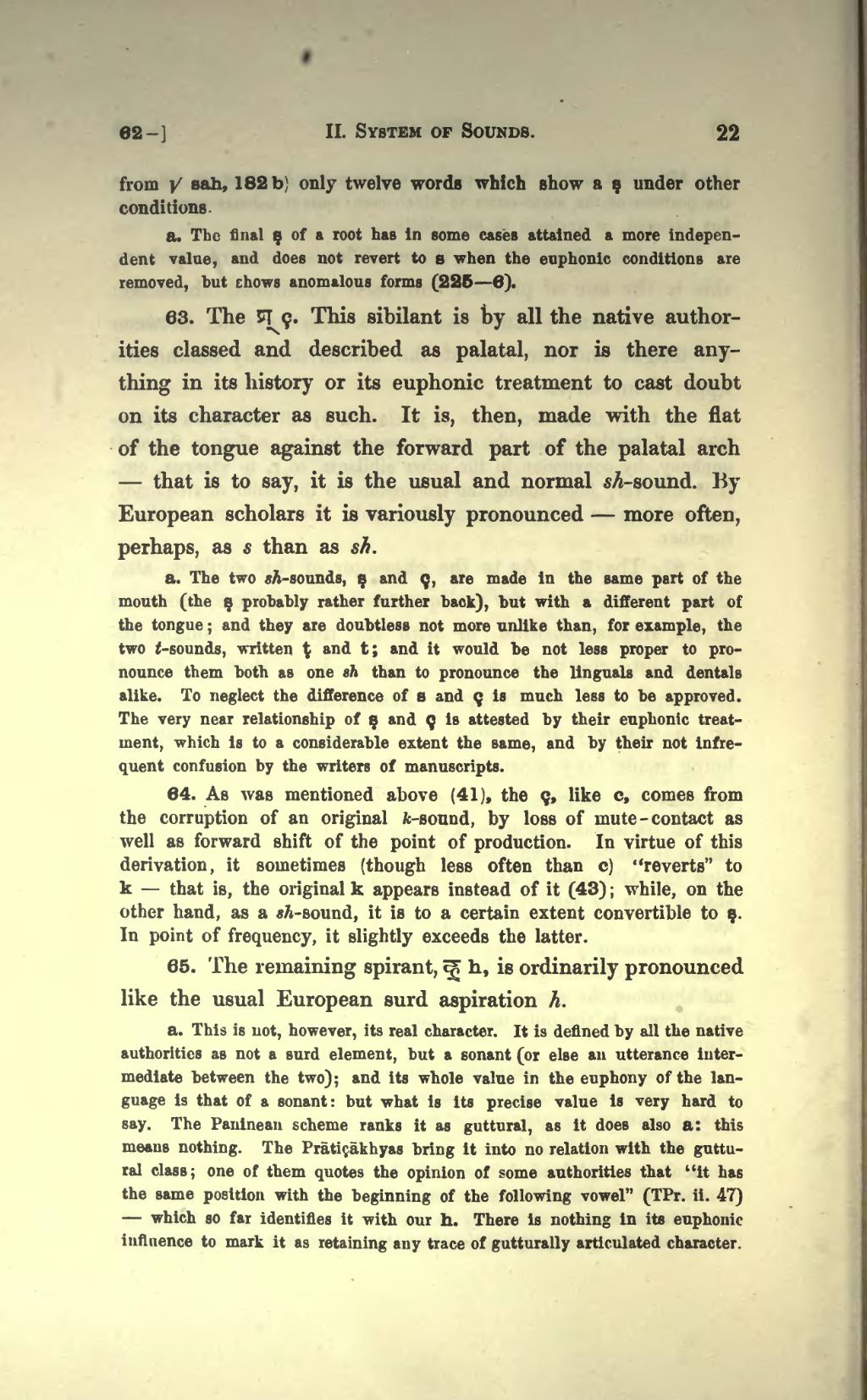from √ sah, 182 b) only twelve words which show a ṣ under other conditions.
a. The final ṣ of a root has in some cases attained a more independent value, and does not revert to s when the euphonic conditions are removed, but shows anomalous forms (225–6).
63. The श् ç. This sibilant is by all the native authorities classed and described as palatal, nor is there anything in its history or euphonic treatment to cast doubt on its character as such. It is, then, made with the flat of the tongue against the forward part of the palatal arch — that is to say, it is the usual and normal sh-sound. By European scholars it is variously pronounced — more often, perhaps, as s than as sh.
a. The two sh-sounds, ṣ and ç, are made in the same part of the mouth (the ṣ probably rather further back), but with a different part of the tongue; and they are doubtless not more unlike than, for example, the two t-sounds, written ṭ and t; and it would be not less proper to pronounce them both as one sh than to pronounce the linguals and dentals alike. To neglect the difference of s and ç is much less to be approved. The very near relationship of ṣ and ç is attested by their euphonic treatment, which is to a considerable extent the same, and by their not infrequent confusion by the writers of manuscripts.
64. As was mentioned above (41), the ç, like c, comes from the corruption of an original k-sound, by loss of mute-contact as well as forward shift of the point of production. In virtue of this derivation, it sometimes (though less often than c) “reverts” to k — that is, the original k appears instead of it (43); while, on the other hand, as a sh-sound, it is to a certain extent convertible to ṣ. In point of frequency, it slightly exceeds the latter.
65. The remaining spirant, ह् h, is ordinarily pronounced like the usual European surd aspiration h.
a. This is not, however, its real character. It is defined by all the native authorities as not a surd element, but a sonant (or else an utterance intermediate between the two); and its whole value in the euphony of the language is that of a sonant: but what is its precise value is very hard to say. The Paninean scheme ranks it as guttural, as it does also a: this means nothing. The Prātiçākhyas bring it into no relation with the guttural class; one of them quotes the opinion of some authorities that “it has the same position with the beginning of the following vowel” (TPr. ii. 47) — which so far identifies it with our h. There is nothing in its euphonic influence to mark it as retaining any trace of gutturally articulated character.
